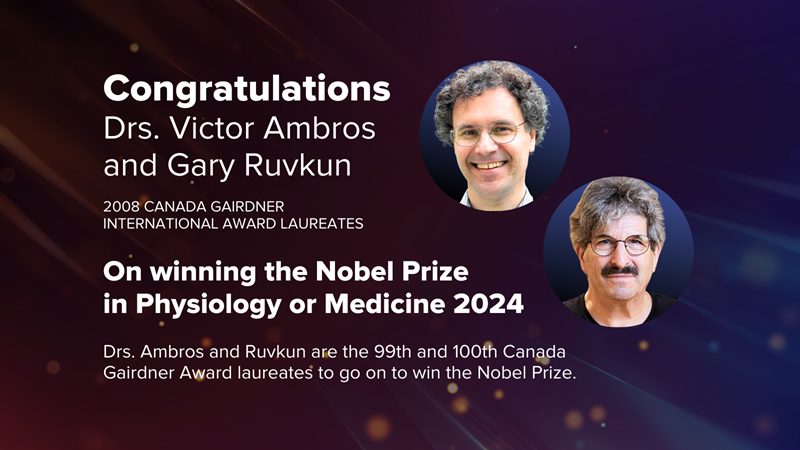Gary Ruvkun

Gary Ruvkun is a professor of genetics at Harvard Medical School. Dr. Ruvkun is a graduate of UC Berkeley and Harvard. His PhD thesis with Fred Ausubel explored the symbiotic nitrogen fixation genes of Rhizobium. Dr. Ruvkun began to work with C. elegans as a postdoc with Bob Horvitz at MIT and Walter Gilbert at Harvard, where he collaborated with fellow postdoctoral fellow Victor Ambros on the molecular analysis of the heterochronic genes.
The work on miRNAs and their target mRNA genes by Ambros and Ruvkun began in 1982 when they targeted the lin-14 gene for molecular analysis. The genetic analysis that Ambros and Horvitz had done suggested that the gene lin-4 negatively regulates lin-14 but the molecular basis of that regulatory axis was not known. In the Horvitz lab, Ruvkun and Ambros had to develop new technologies to allow such genetically defined loci to be analyzed molecularly, and they succeeded to isolate the lin-14 gene. This work continued in their own labs at Harvard, starting in 1984 for Ambros and 1985 for Ruvkun. The first hint that the key regulatory element of the lin-14 gene was in its 3' untranslated region came from the molecular analysis of lin-14 gain-of-function mutations, showing that they are deletions of conserved elements in the lin-14 3' untranslated region that relieve the normal late stage-specific repression of LIN-14 protein production, and showing that lin-4 is necessary for that repression. The Ambros lab discovered in 1993 that lin-4 encodes a very small RNA product. When Ambros and Ruvkun compared the sequence of the lin-4 miRNA and the lin-14 3' untranslated region, they discovered that the lin-4 RNA base pairs with conserved bulges and loops to the 3' untranslated region of the lin-14 target mRNA to downregulate its translation, and that deletions in the lin-14 3' UTR complementary sites, which are conserved in evolution, relieve the repression normally induced by base pairing to the lin-4 miRNA These papers revealed a world of RNA regulation at an unprecedented small size scale and the mechanism of that regulation.
In 2000, the Ruvkun lab, again in collaboration with the Ambros and Horvitz labs, reported in Nature the identification of second microRNA, let-7, which like the first microRNA regulates translation of the target gene lin-41 via imperfect base pairing to the 3' untranslated region of that mRNA. This was the first indication that miRNA regulation via 3' UTR complementarity was a general phenomenon.
The microRNA field was shown to be general in biology with the publication from the Ruvkun lab of a second Nature paper in 2000 reporting that the sequence and regulation of the let-7 microRNA is conserved across animal phylogeny, including in humans. Presently thousands of miRNAs have been discovered, pointing to a world of gene regulation at this size regime.
Dr. Ruvkun lab has also identified protein coding genes that constitute a genetic pathway for the regulatory function of miRNAs and siRNAs and other small RNAs. In a 2005 Nature paper, the Ruvkun lab reported that mutations in the retinoblastoma ortholog of C. elegans dramatically activates RNAi, and that cell lineage defects in animals with defective retinoblastoma could be reversed by inactivating particular RNAi pathway genes. This revealed that small RNAs are likely to mediate the dysregulations of cell cycle during tumor formation, a previously unsuspected regulatory modality in tumor formation. In addition to revealing fundamental regulatory axes in biology, some of these components may be developed as drug targets to enhance RNAi in mammals, a technical improvement that may be necessary to elevate a laboratory tool to a therapeutic modality.
Dr. Ruvkun has also worked in other fields, such as control of longevity and fat storage, where his lab discovered for example that insulin signaling is key to longevity in C. elegans. Dr. Ruvkun has an active research program in microbiology, searching for deeply divergent microbial life, even on other planets.

